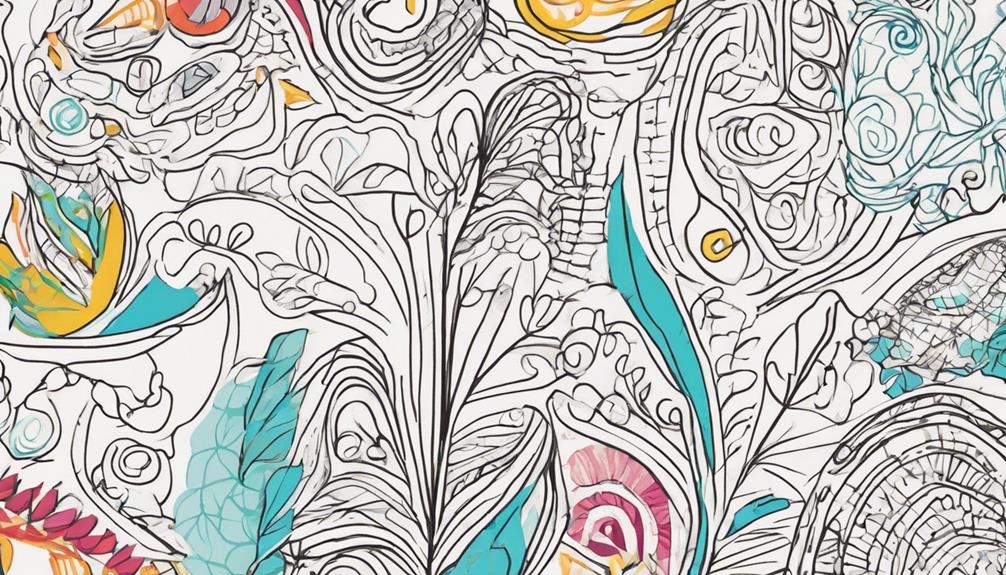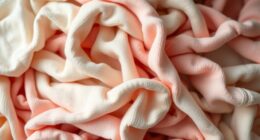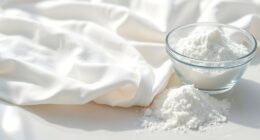Welcome to the world of textile arts! In this dynamic field, artists utilize materials like cotton, wool, and silk to craft exquisite works of art. Approaches such as weaving, knitting, and felting result in one-of-a-kind textures and patterns. From ancient cultures to contemporary advancements, textile arts boast a rich historical importance. Interested in delving deeper into the materials, techniques, and upcoming trends within this captivating realm? Keep exploring to uncover the detailed beauty and skill of textile arts.
Key Takeaways
- Textile arts encompass fiber, yarn, and fabric work.
- Artists blend traditional and modern techniques.
- Materials range from natural fibers to synthetics.
- Techniques include weaving, knitting, crochet, felting, and dyeing.
- Textile arts reflect historical and cultural significance.
Definition of Textile Arts
What exactly do we mean by 'Textile Arts'?
Textile arts refer to a diverse array of creative practices that involve working with fibers, yarns, and fabrics to produce intricate and often elaborate pieces. This category includes fiber art, textile design, and textile craft, where artists manipulate materials like natural fibers such as cotton, wool, and silk to craft both functional and decorative items.
The history of textile arts is extensive, spanning over 10,000 years and encompassing a wide range of cultural, practical, and artistic expressions. Throughout history, textiles have played an essential role in societies worldwide, not only providing necessary items like clothing and shelter but also serving as a form of artistic expression.
Artists in the textile arts field draw from this rich history, blending traditional techniques with modern innovations to create unique and mesmerizing pieces that continue to push the boundaries of creativity and design.
Materials Used in Textile Arts
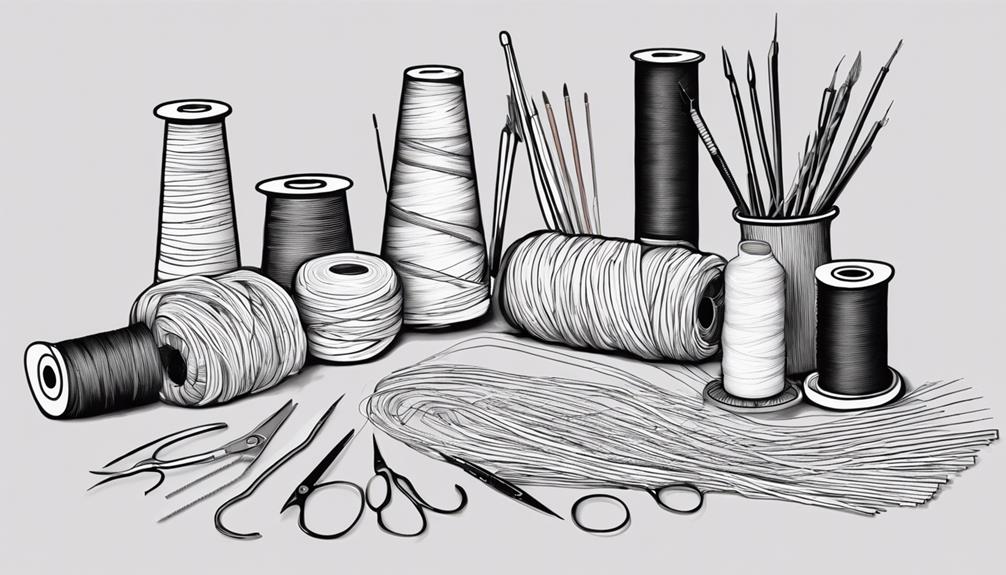
In the world of textile arts, a wide array of materials such as fabric, yarn, fiber, thread, and wire fabric are utilized to bring artistic visions to life. Artists in this field often work with natural fibers like cotton, wool, and silk, as well as synthetic fibers and recycled materials such as hemp. These diverse materials offer a range of textures and colors, allowing for unique and creative expression in traditional crafts and contemporary designs.
In textile arts, the choice of materials plays an essential role in shaping the final outcome of the artwork. Whether using traditional craft techniques or experimenting with unconventional materials, artists can achieve a variety of effects – from soft and delicate to structured and bold.
Historical Significance
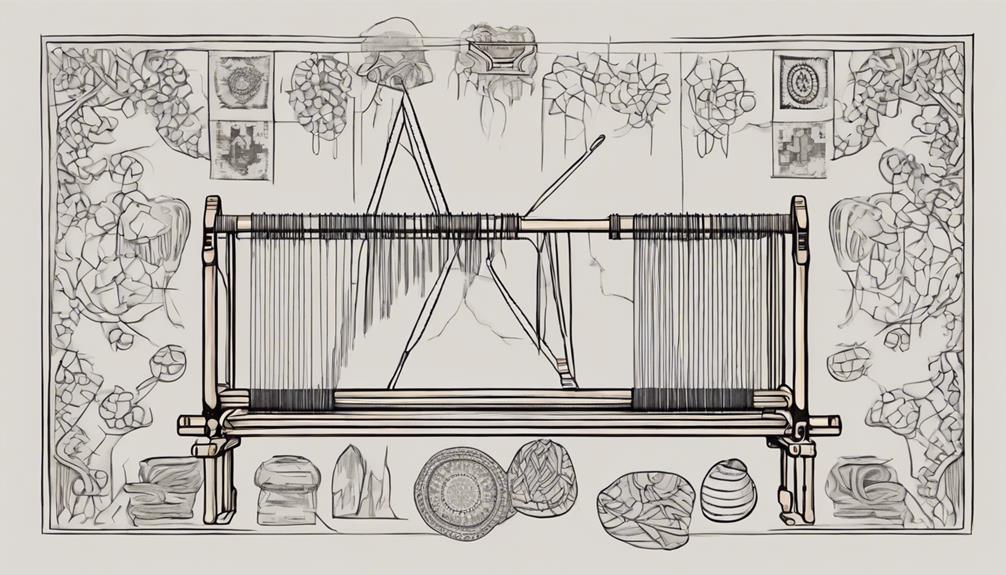
Explore the ancient origins of textiles, the evolution of materials over time, and the cultural impact of textile arts.
From the practical uses in ancient civilizations to the intricate designs showcasing societal status, textiles have a rich history worth discovering.
Uncover the artistic contributions that have shaped the narrative of textile arts throughout the ages.
Ancient Textile Origins
Delving into the historical importance of ancient textile origins reveals a rich tapestry of plant-based fibers utilized by early civilizations. Plant fibers played a pivotal role in the development of textile arts, shaping the way ancient societies created and utilized fabrics. Here are some key points to ponder:
- Flax: Dating back to 6500 B.C., flax was spun into linen for various purposes such as bandages, clothing, and tapestries.
- Cotton: First used around 5000 B.C., cotton provided comfort, durability, and absorbency in textiles like velvet, chambray, and jersey.
- Microscopic Analysis: Plant fibers have been identified in ancient textiles through microscopic examination, aiding in understanding historical plant fiber usage.
- Historical Importance: Ancient civilizations heavily relied on plant-based fibers like flax and cotton for a wide range of textile applications, showcasing the historical importance of plant usage in textile arts.
The utilization of these ancient plant fibers laid the groundwork for textile production and highlights the shift that occurred with the introduction of synthetic fibers in the late 19th century.
Material Evolution Timeline
Throughout history, the evolution of materials in textile arts has played a pivotal role in shaping the way fabrics are produced and utilized.
Natural fibers like flax and cotton have deep-rooted historical significance in textile arts. Flax, dating back to 6500 B.C., was spun into linen for various uses, showcasing its importance in textile materials. Similarly, cotton, introduced around 5000 B.C., revolutionized textiles by offering comfort and absorbency in fabrics like velvet and jersey. Microscopy techniques have revealed the presence of these natural fibers in ancient textiles, aiding in understanding historical plant fiber usage in textile arts.
In contrast, the emergence of synthetic fibers in 1885 marked a shift towards more durable and versatile materials, transforming the landscape of textile production. The enduring significance of natural fibers like flax and cotton underscores their pivotal role in the evolution of textile materials and techniques.
Cultural Artistic Contributions
The historical significance of cultural artistic contributions in textile arts spans over millennia, showcasing the mastery and creativity of societies worldwide. Textile artists have left an indelible mark on history through their intricate work, reflecting diverse cultural influences and traditional textile designs.
Here are some key points to ponder:
- Patterns and Motifs: Textile arts are known for their intricate patterns and motifs, often carrying symbolic meanings or representing cultural stories.
- Textile Artists: Throughout history, talented textile artists have pushed the boundaries of creativity, innovating new techniques and designs.
- Traditional Textile Designs: From ancient civilizations to modern times, traditional textile designs have evolved, blending heritage with contemporary interpretations.
- Diverse Cultural Influences: Textile arts serve as a visual representation of cultural diversity, with each society contributing unique styles and techniques to the craft.
These aspects highlight the deep cultural and historical significance embedded in textile arts across the globe.
Creation Techniques

Let's explore the various methods used in textile creation:
- Weaving
- Knitting
- Crochet
- Felting
- Dyeing
Each technique offers unique ways to craft fabric, from interlacing threads to forming loops and stitches.
Understanding these creation techniques can enhance your appreciation for the artistry and skill behind textile arts.
Textile Creation Methods
When creating textiles, various techniques such as weaving, knitting, crochet, felting, and dyeing are utilized to produce a wide range of fabrics and designs. These methods offer unique ways to manipulate fibers and create stunning textile pieces:
- Weaving: Involves interlacing warp and weft threads on a loom to form fabric with different patterns and textures.
- Knitting: Uses needles to create loops of yarn, allowing for the creation of flexible and stretchy fabrics.
- Crochet: Utilizes a hook to produce fabric with a range of intricate designs and textures, offering versatility in crafting.
- Felting: Matting fibers like wool together through friction or moisture to create dense and durable fabrics suitable for various projects.
Dyeing: Applies color to yarn or fabric using techniques such as direct application, solvent immersion, acid dyeing, or heat transfer, allowing artists to customize their textiles with a myriad of colors and effects.
Crafting Techniques Overview
Explore a variety of crafting techniques that are essential in textile arts for creating intricate and unique fabric pieces.
Weaving is a fundamental technique that involves interlacing warp and weft threads to produce fabric.
Knitting, on the other hand, utilizes needles to create interlocking loops of yarn, resulting in versatile textiles.
Crochet, using a hook, forms fabric through loops and stitches, allowing for intricate designs.
Felting, a process of matting fibers like wool together, creates dense textile material suitable for various projects.
Additionally, dyeing is pivotal in textile art, as it applies color to yarn or fabric using methods such as liquid, powder, or gas dyes.
Felting and Dyeing Processes
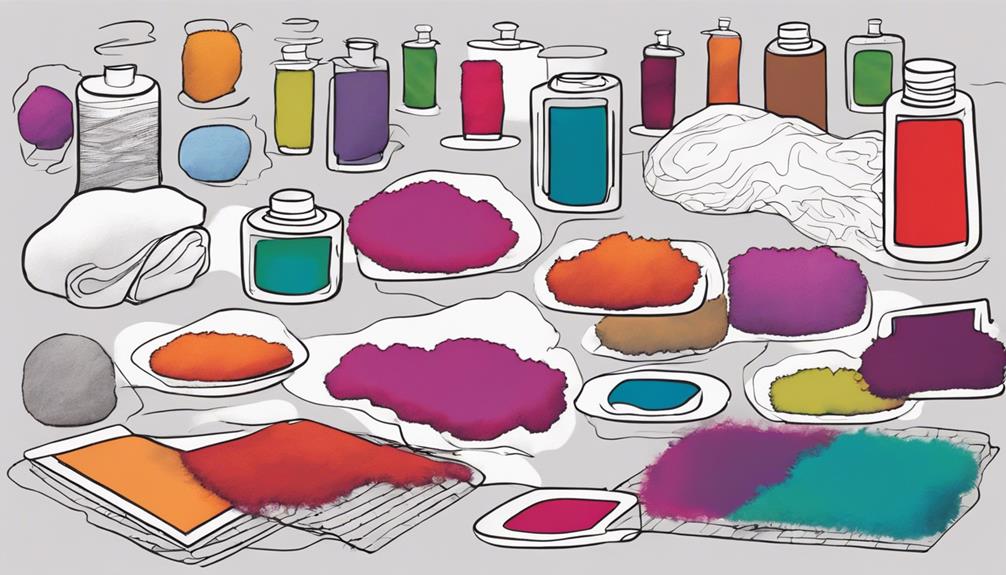
Felting and dyeing processes are essential techniques in textile arts, contributing to the creation of unique fabric textures and vibrant colors. When exploring these techniques:
- Felting: Involves matting fibers like wool or fur together to create a dense fabric texture. This technique can be done on a loom or through hand-felting methods, allowing for the creation of distinct textures and patterns.
- Dyeing: The process of applying color to yarn or fabric using various methods such as liquid, powder, or gas dyes. Different dyeing processes like direct, solvent, acid, and heat transfer methods offer a wide range of color options for artists.
- Fibers: Various types of fibers, such as wool and fur, are commonly used in felting to achieve different textures and effects.
- Fabric: The end result of felting and dyeing processes, fabric can range from soft and fluffy to dense and vibrant, depending on the techniques and materials used.
Educational Resources
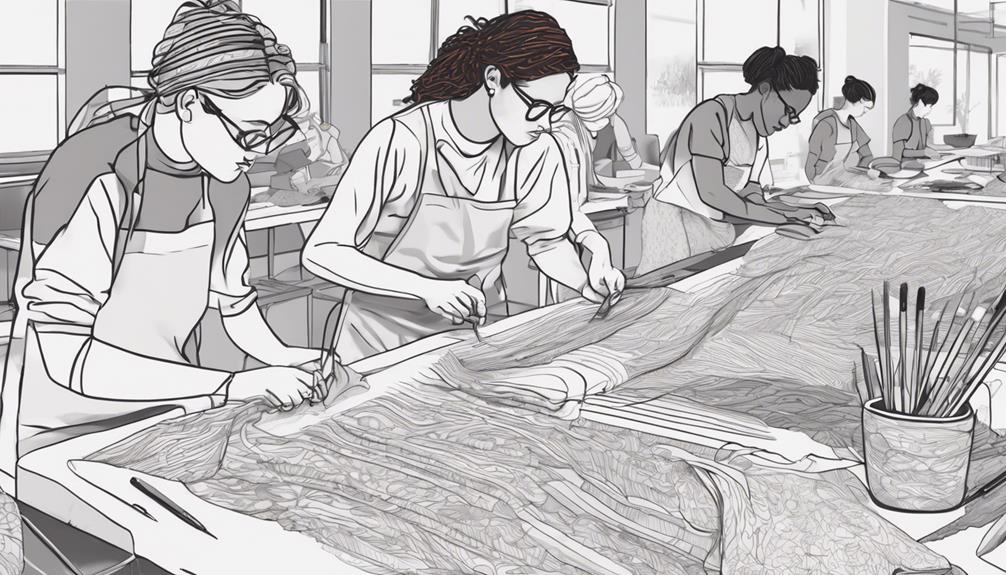
Discover a wealth of educational resources on Study.com for teachers and students alike. With over 30,000 video lessons and teaching resources, Study.com provides a vast array of educational content beneficial for educators.
Membership grants access to quizzes, worksheets, and thorough lesson plans, aiding teachers in lesson preparation and delivery. Educators recommend Study.com for its ease of use and the depth of its resources.
Registration on the platform guarantees unlimited access to educational materials that cater to both teachers and students. Whether you're looking for teaching resources to enhance your lessons or in-depth materials to support your students' learning, Study.com offers a one-stop solution for all your educational needs.
Join the community of educators who trust Study.com for its valuable educational resources and make your teaching experience more effective and engaging.
Artistic Evolution
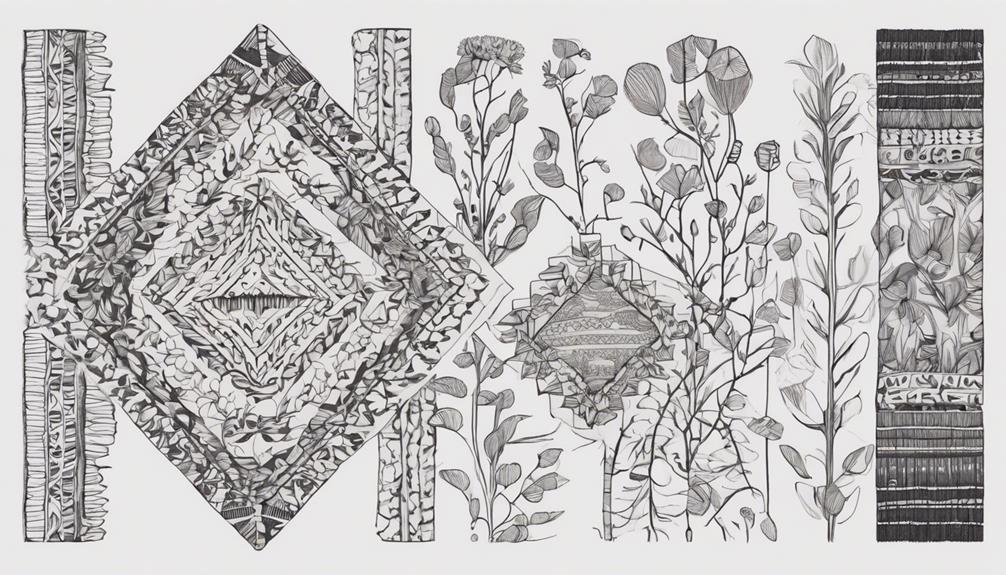
Artistic evolution within textile arts showcases a blend of historical techniques and contemporary innovations, reflecting a seamless fusion of tradition and modernity.
In modern art, fiber artists like Windy Chien, Clément Bucco-Lechat, Cecilia Vicuña, and Agnes Herczeg offer unique and contemporary interpretations of traditional methods.
Innovations in lace making, as seen in bobbin lace, needle lace, knitted lace, and crochet lace by artists such as Pierre Fouché, Agnes Herczeg, and Rhianne Evans, exemplify the modern applications of age-old techniques.
The evolution of weaving from ancient Egypt to its modern applications highlights the enduring significance of this craft in textile production and artistry.
Artists in the fabric domain continue to push boundaries with their unique techniques and styles, seamlessly incorporating traditional methods into their modern artistic expressions, bridging the gap between historical techniques and contemporary innovation.
Plant Usage in Textile Arts
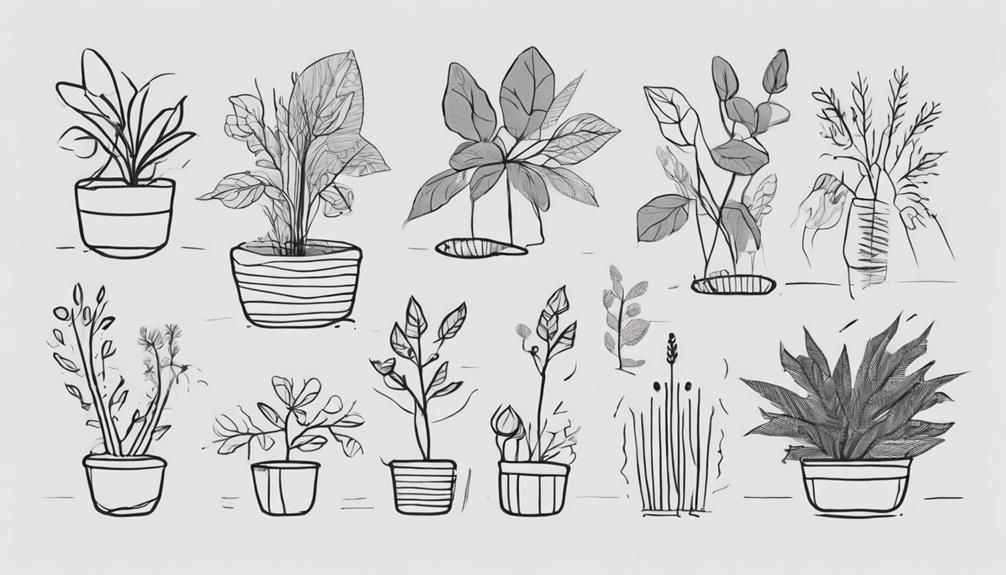
Utilizing plant fibers such as flax and cotton has been a long-standing tradition in textile arts, dating back to ancient civilizations. Flax, an ancient fiber, has been used for textiles like linen since 6500 B.C., while cotton, known for its comfort and absorbency, has been utilized in textiles since 5000 B.C. The consistent thickness of flax filaments made them perfect for spinning into yarn, resulting in the creation of linen fabrics for various purposes.
Historical plant fiber usage, including flax and cotton, has been identified in ancient textiles through microscopic analysis, shedding light on ancient textile production methods.
As plant fiber usage evolved, the introduction of synthetic fibers in 1885 marked a significant shift in textile production. Despite the emergence of synthetic fibers, the rich history and benefits of plant fibers like flax and cotton continue to play an essential role in the textile arts, offering a natural and sustainable option for creating a wide range of fabrics.
Future Innovations
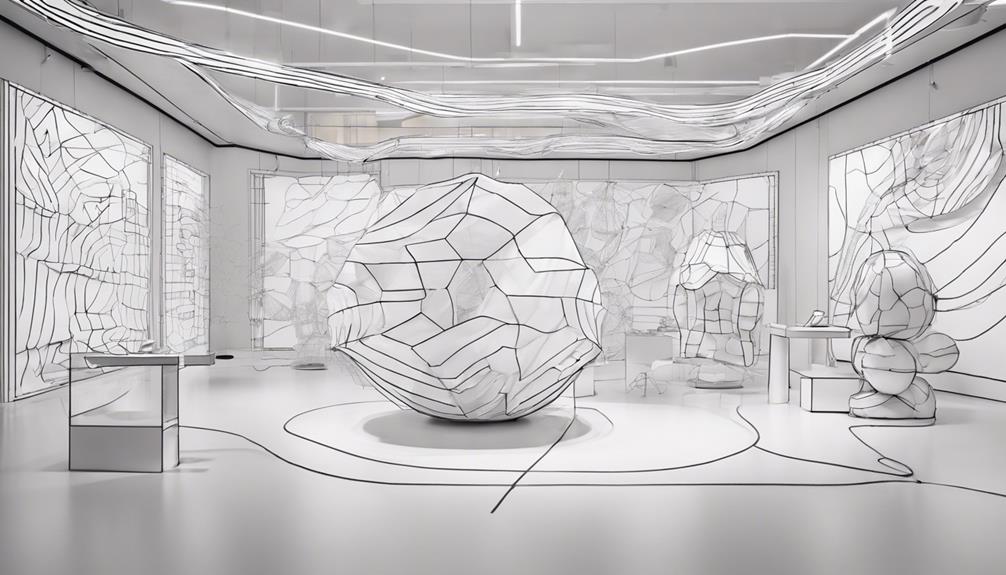
Innovations in plant-based textiles are shaping the future of textile art, paving the way for sustainable and creative practices. The integration of plant-based materials in textile art not only offers sustainability and biodegradability but also opens the door to unique and innovative practices for artistic expression. Here are some key points to contemplate for the future of textile arts:
- Suzanne Lee's BioCouture uses fermentation to create plant-based paper garments, showcasing a new way of incorporating sustainability into fashion.
- Artists can achieve unique designs by tearing or cutting plant sheets, adding a touch of creativity and eco-consciousness to their artwork.
- The use of plant fibers in art installations is contributing to the development of living art pieces, blending nature with artistic expression.
- The future of plants in textile art involves exploring sustainable practices that promote environmental consciousness while pushing the boundaries of creativity in the art world.
Frequently Asked Questions
What Are the Five Importances of Textiles?
Textiles hold significant importance in various aspects of life. They provide warmth, protection, and insulation, serving essential roles in clothing.
Textiles also convey social signals by reflecting cultural traditions and status through patterns and designs. Additionally, they offer practical functions such as storage and transportation.
Furthermore, textiles enhance spaces visually with decorative elements like tapestries and rugs. They blend tradition with innovation, embodying both practicality and artistic expression in contemporary design.
How Do You Do Textile Art?
To do textile art, you can explore techniques like weaving, knitting, crochet, and felting.
Weaving uses warp and weft threads for intricate designs.
Knitting involves interlocking loops with needles for varied textures.
Crocheting uses a hook to create flexible designs.
Felting mats fibers for sculptural pieces.
Experiment with these methods to craft unique textile creations that showcase your creativity and skill.
What Are the Techniques Used in Art Textile?
You want to know about the techniques used in art textile.
Weaving intertwines threads on a loom, knitting loops yarn with needles, crochet hooks yarn to form fabric, felting mats fibers together, and dyeing adds color through various methods.
These processes blend fibers into unique textures and patterns, allowing artists to create stunning fabric designs that evoke a sense of wonder and creativity.
What Is the Oldest Textile Art?
The oldest textile art dates back around 27,000 years, with intricately woven flax fibers discovered in a Czech Republic cave. This early form of textile art involved spinning plant fibers into yarn and weaving intricate patterns on looms to showcase advanced craftsmanship.
Archaeological findings suggest that textile arts were vital in the creation of clothing, textiles, and decorative items in early human societies. Ancient civilizations like Egypt and Mesopotamia displayed intricate textile designs, reflecting cultural significance.
Conclusion
As you explore into the world of textile arts, you're weaving a rich tapestry of creativity and expression.
Like a skilled seamstress stitching together threads of history and innovation, you're creating a masterpiece that transcends time.
Keep exploring, experimenting, and pushing the boundaries of what's possible with textiles.
Your artistic journey is a vibrant patchwork quilt of endless possibilities waiting to be discovered.

